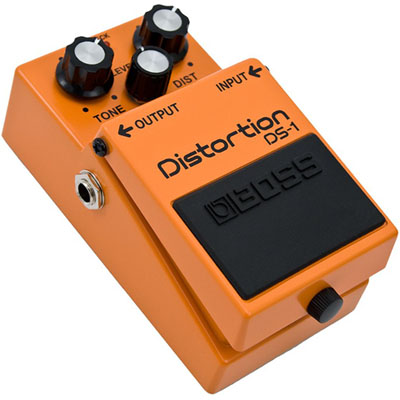
By Ed Malaker
Posted 06/29/2018
In discussing the differences between overdrive and distortion, what creates them, and how they’re used, we’ll begin with the relationship between a device’s maximum signal level and its threshold.
Every device in your guitar rig, or your home recording studio, has been designed to accept a maximum signal level. The maximum signal level that a device can accept is called that device’s threshold. If you introduce a signal to a device that exceeds the threshold, the parts of the signal that exceed it will get “clipped” (like tall grass), in various ways. Often, when a signal gets clipped, additional frequencies get created and added to the signal. They’re sort of by-products of the clipping and they’re known as overtones and harmonics.
Sometimes, the way a signal gets clipped sounds musical, natural, and warm. At other times it sounds harsh, brittle, and as though there was something wrong with your equipment. Clipping the signal adds a “buzzy/crunchy” character to the tone, and that buzz is what we call distortion. Distortion is everywhere — on TV, radio, etc., and it’s rarely a good thing. One of the most revolutionary things about the electric guitar is that players found a way to make it musical.
Now that we know what distortion is, we can talk about the two very similar types that guitar players often use. These are overdrive and what we’ll simply call distortion. Each of these sound techniques is achieved in a different way, but they both work by carefully clipping a signal.
Overdrive
Overdrive is the name we give to one of the musical-sounding distortions that guitarists use quite often. It’s created by sending into a tube amplifier, a signal that is too hot. Because of the way valve tubes are manufactured, they react differently to a signal that is beyond their threshold than many of the electronic components that were created to replace them. The clipping that tubes create is a more gradual, or “soft” clipping (the blades of grass are cut but the tips are rounded). This gives the overdrive a smooth, natural, and warm sound. Valve tubes create even and odd-order harmonics that are natural number multiples of the input frequency. This is something that sounds good, according to guitarists worldwide.
With overdrive, a lot of the guitar’s natural tone and dynamics are preserved. What results is more of a gentle flavor than an outright effect. Guitarists can control the overdrive with their attack, by playing more aggressively, and by using the Volume and Tone controls on their guitar. Overdrive can be heard everywhere; it’s very popular in the Blues, early Rock & Roll, and in a lot of today’s music. There are countless overdrive foot pedals designed to emulate tube-driven overdrive, with varying degrees of success. To get a good idea of what overdrive sounds like, just listen to some Stevie Ray Vaughan, ZZ Top, Led Zeppelin, and Deep Purple.
Distortion
Distortion is a more extreme version of overdrive. Many times a great-sounding distortion starts with a great-sounding overdrive. Distortion is often associated with modern amplifiers and electronics, in which the transistors and other components are much less forgiving of a signal exceeding the threshold than tubes are.
The clipping that can be expected with distortion is a “hard clipping” (the blades of grass are cut and the tips are flat). This creates an edgy and aggressive type of sound. The signal is often very compressed, with no dynamic range and the loss of much of the guitar’s original tone. Distortion gives guitar players a very heavy and crunchy tone, with lots of Sustain. This is great for solos and heavy rhythm playing. It’s very popular in all types of Metal music and can easily be heard by listening to Metallica, Slayer, and Lamb Of God.
Summary
We hope that with this up-close look at the differences between overdrive and distortion, you’re in a better position to decide which would work for you. If you’re looking for a Bluesy sound and you like the idea of rolling back your Volume knob and playing with cleaner tones, then you probably want overdrive. Overdrive will also work for you if your music depends on loud and quiet passages, and you want the natural sound of your guitar to come through. If what you’re going for is a very heavy sound with lots of crunch, and you play a lot of fast passages, and use lots of sustained notes, then you probably want distortion.
If you’ve found this article helpful, please feel free to share this with your friends on Facebook and Twitter. For more articles on guitar electronics, visit humbuckersoup.com.
